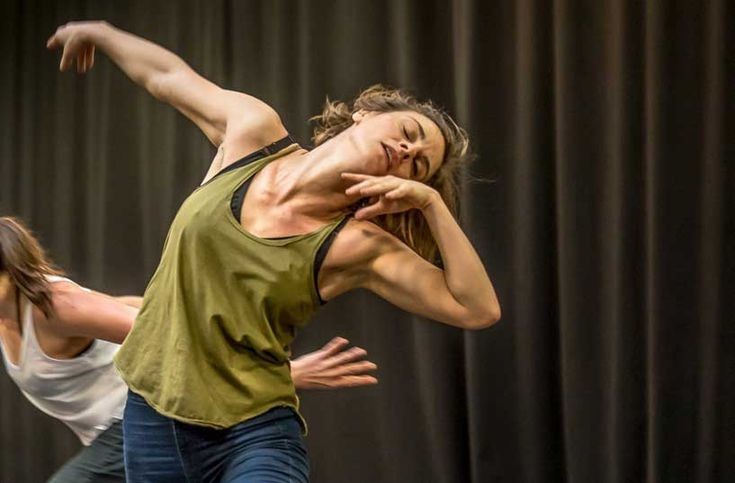Conscious Dance is the practice of freeform movement with deep somatic and mindful awareness. Conscious dance is medicine. It may hold a particular intention, such as working through emotions, finding a state of meditation, or expressing oneself authentically and creatively.
Conscious dance can be defined as unchoreographed, intentionally non-valuative mindful movement commonly practiced in a group setting for purposes of authentic self-expression, self-discovery, interpersonal connectedness, and personal healing or growth.
The practice is based on self-acceptance, curiosity, playfulness, and self-expression. It can include shadow work, trauma release and ritualistic ceremonies, and different dimensions of human beings such as body, mind, emotions, and spirit.
“It’s a physical activity, but can also be meditative and spiritual, as well as emotional,” Dr.Vergeer said.
“It allows you to explore and express how you feel through movement.”
“You don’t have to learn any steps and there’s no pressure to perform, which makes it easier to relax and for your body and mind to get into a state of flow.”
“Unlike dancing at a nightclub or party, there are no shoes, no alcohol, no talking, and no judgment.”
“People can express themselves freely in a safe space and connect with their inner-self without having to conform to ideas of what dance should be.”
The very first thing about this dance as Gabrielle Roth founder of 5 Rhythms movement practice has said: “there is no way to do it wrong” and the reason for it is the freedom on which conscious dance is based. We are all free to choose the way we want to move, our speed and groove and we can include any form of movement on any level of the ground, kneeled or standing.
Moving with a concept can be playful and out of curiosity as we can investigate the different ways of embodying it and it can be in a ritualistic and healing way as if we integrate it with our own body and seek to connect to other bodies and to the life force which moves in different shapes.
Also, there are 4 keys to dancing consciously that you can practice in this regard.
- Awareness
- Connecting with Breath.
- Listening and allowing.
- Relaxing and focusing.
There are many forms of conscious dance. Some are based on a connection to an ecstatic experience, others are based on mindfulness, and still, others are based on deep shamanic trance. Conscious dance can be done by anyone regardless of physical ability, fitness, or prior dance experience.
· 5Rhythms
In St. Petersburg, Florida, 22 women have gathered to seek the bliss promised by 5Rhythms, one of the original conscious dance forms, founded by the late Gabrielle Roth. “Find your flow. Feel your connection to the Earth through your feet and release your head,” guides facilitator Amber Ryan, of New York City, who travels the world for dance sessions. “Use your body as a gateway into the now.” For two hours, dancers move freely and individually, swaying, sensing, and interacting in an experience called “the wave”, intended to move energy through the body, release emotions and heal the psyche.
Connecting “within” through free and inspired body movement is the power of conscious dance.
· Journey Dance
Toni Bergins, from the Massachusetts Berkshires, is a frequent presenter at the Kripalu Center and Omega Institute for Holistic Studies. After years of studying and teaching movement, drama, creative visualization, and gestalt techniques, she combined them in creating Journey Dance. More than 400 trained facilitators now offer it in 60 or 90-minute classes worldwide based on the philosophy. Every class includes visualization, creative movement, affirmations, and evocative music, all working together to release emotions and connect with the spirit.
“You learn to love your body, expand your emotional intelligence, clear your mind and connect with your inner source,” explains Bergins. “You express yourself, infuse life with creativity, and connect with a dancing community.”
· Nia Technique
For those that prefer more structure, the Nia Technique is the original barefoot mind-body-spirit fitness practice, activating sensation and awareness in a workout adaptable for everybody. More than 2,600 instructors in 51 countries offer 60-minute classes where enthusiasts move the way the body is built to move, reaping cardiovascular fitness and therapeutic benefits while having joyful fun. Dancers, guided by the instructor’s moves, feel the rhythm of the music and ground themselves in spirit, equipping themselves to take the self-healing experience into everyday life.
Dancers move to music designed to animate each chakra through an eight-stage process via a Nia DJ. They’re guided to listen to body feedback through sensation, release emotions, and relish being in the present moment. “Regardless of how you act, dress, or think, the way you feel inside reveals the most accurate truth of oneself and this is reflected in dance,” says Rosas, of Portland, Oregon, co-founder and creator of the technique “Moving without interference allows your unconscious creative self to shine.”
Why is conscious dancing important?
The Heart chakra – the bridge between lower and upper chakras – is given special attention during Conscious Dancing, with an aim of awakening to the freedom of an open heart that is ready to give and receive love in its purest, unconditional form.
Songs are carefully selected to touch the innermost strings of our spiritual hearts. The ability to keep our hearts open, even if we have been hurt in the past, is a sign of spiritual maturity and courage. Life without an open heart has no real beauty.
The benefits of conscious dance
Dance Divine caters to a broad spectrum of people; some approach it from a therapeutic movement perspective and some simply enjoy freestyle dancing. At the very least it’s an opportunity for us to get out of our heads and into a body-based awareness. And if we want to go a little deeper and work with conscious movement as an integrative healing practice, we may find that it has the power to restore harmony between the body, mind, and spirit.
The main benefits of conscious dance practice are:
1. Increased personal and interpersonal awareness
Some people refer to conscious dance as a ‘moving meditation’ practice. We can clear the mind by placing our awareness on the body and focusing on its movements, sensory information, and breath. This increases our awareness of the Self and brings our focus on the present moment; the birthplace of conscious action and choice, mindfulness, awakening, and insight.
2. Strengthening our relationship with our authentic self
When we practice ‘being with what is we are developing the acceptance of what is real and true for us at that moment. The Authentic Self may be a small voice, easily overshadowed, but it is a persistent one. What was once a clear signal is now a constant dull ache.
Asking the Authentic Self to put its feelings and needs into words may not always be the best approach – it might not be used to articulating itself. Asking the body to show us how it feels through movement, shapes, and postures can be very informative, and effective.
We can know, physically, when we are being emotionally congruent or not. When we are embodied (“in”) vs. when we are in our heads (“out”). When something is a “YES” or a “NO”.
Fostering a healthy relationship with our Authentic Self leads to improved self-esteem and a sense of confidence that come from being ‘internally-referenced’ (guided by our intuition and values) versus being ‘externally-referenced’ (taking our cues on how/who/what to be from the outside world).
3. Moving with, moving through, and being moved by our content & curriculum
There is a certain Grace worth striving for when it comes to developing our relationship with – and orientation towards – our curriculum (life path and lessons). As we practice “being with what is” and accepting how we feel, we may realize that we also have the freedom to choose HOW we feel about our content, our ‘stuff’, and our life.
We can improve that relationship by developing not only an accepting orientation towards it but also a courageous one, a graceful one, a curious one, a playful one, an expressive one. We can work on our attitudes and practice releasing the resistance that causes mental, emotional, and creative blocks.
4. Health and wellness
Conscious dance can boost happiness and reduce stress, and it could help people struggling with common mental health problems, including depression and anxiety.
Conscious movement and great music support a healthy physical lifestyle by improving balance, focus, blood flow, heart rate, and stimulating brain waves. It is a mindful movement practice where you can learn to listen to your body, attune to what it needs, enjoy its capabilities, and respect its limitations.
A growing tribe of movers and shakers are discovering and unleashing their power in conscious dance, a combination of moving meditation, soul-stirring music, self-expression, and sweat.
5. Alignment that supports health and spiritual awakening
6. Removal of many inner blockages and emotional weight
7. Increased capacity to deal with the challenges and stresses of life
Nowadays this practice is practiced in rehabilitation centers, in psychiatric hospitals and psychologists use it as an efficient tool to cure some neurosis and traumas also it’s a wellness practice that brings more meaning and indulges to our lives.

